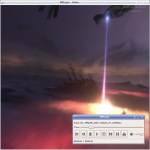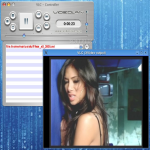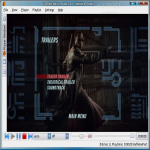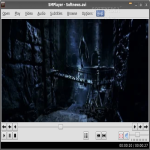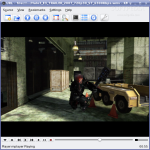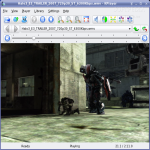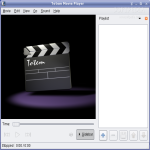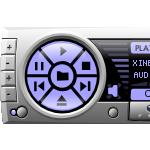cat
cat tells the system to "concatenate" the content of a file to the standard output, usually the screen. If that file happens to be binary, the cat gets a hairball and the output can be a bit ugly. Typically, this is a noisy process as well. what is actually happening is that the cat command is scrolling the characters of the file, and the terminal is doing all it can to interpret and display the data in the file. The interpretation can include the character used to create the bell signal, which is where the noise comes from. the cat command have the following format.
# cat filename
cd
cd stands for change directory. You will find this command extremely useful. There are three typicla ways you can use this command
- cd .. : Move one directory up the directory tree.
- cd - : Moves to your home directory from wherever you currently are.
- cd directory name : Change to a specific directory. This can be directory relative to your current location or can be based on the root directory by placing the forward slash(/) before the directory name.
cp
cp command is the abbrevation for copy; therefore , this command enables to copy objects. For eg : to copy the file from
file1 to
file2, issue the following command.
# cp file1 file2
find
The
find command will look in whatever directory you tell it to, as well as subdirectories under that directory, for that file specified. In the following example, the
find command searches for files ending with
.pl in the current directory.
# find *.pl
grep
The
grep (global regular expression parse) command searches the object you specify for the text that you specify. The syntax for the following command.
# grep text file
ls
The
ls command lists the contents of the directory. The format of the output is manipulated with options. In the following example, the
ls command, with no options, list all unhidden files (the file that begin with a dot is a hidden file) in a alphabetical order, filling as many column as will fit in the window.
# ls
more
more is a filter for paging through text one screen at a time. This command can only page down through the text, as apposed to less, which can page both up and down through the text.
rm
rm is used to delete specified files. with the
-r option (Warning: This can be dangerous!),
rm will recursively remove files. therefore if as root, when you type
rm -r , all your files will be gone. By default, rm command will not remove directories.
tar
tar is an archiving program designed to store and extract files from an archive file. This tarred file (called as tar file) can be archived to any media including a tape drive and a hard disk. the syntax for the tar command as follows
# tar action optional functions file(s)/director(ies).
vi
vi is an extremely powerful text editor (not to be confused with a word processor). Using
vi,you can see your file on the screen (this is not the case with a line editor, for example), move from point to point in the file, and make changes. But that's where the similarities end. Cryptic commands, a frustrating user interface, and the absence of prompts can all drive you up a wall. Still, if you focus on a few basics, you'll get the job done.
If i have missed any Linux command that fit in the above list, please let me know. Stumble
Stumble Reddit
Reddit del.icio.us
del.icio.us Technorati
Technorati
 Let's see how Ubuntu differs from other Linux Distributions - Redhat or Fedora, Debian ,Suse ,Knoppix.
Let's see how Ubuntu differs from other Linux Distributions - Redhat or Fedora, Debian ,Suse ,Knoppix.